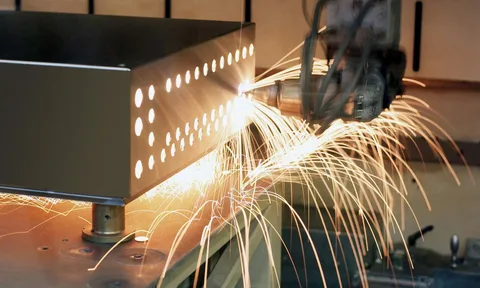Vertical mast lifts are an invaluable tool for a wide range of industries, from construction sites to warehouses. These machines provide efficient and safe access to elevated workspaces, improving productivity and reducing manual labor. However, like any piece of machinery, vertical mast lifts require regular maintenance to ensure they continue to operate safely and efficiently. By following the maintenance tips recommended by experts in the field, operators and businesses can extend the lifespan of their lifts, improve performance, and prevent costly repairs.
When it comes to maintaining vertical mast lifts, manufacturers play a key role in providing insights and best practices. A vertical mast lifts manufacturer like Hyneelift offers valuable recommendations on proper care and upkeep, helping operators get the most out of their equipment. Following expert maintenance tips ensures that vertical mast lifts remain in optimal condition, reduce the risk of downtime, and continue to meet safety standards.
1. Regular Inspections
One of the most crucial aspects of vertical mast lift maintenance is conducting regular inspections. Routine checks should be performed before each use to ensure the lift is in good working condition. Look for any visible signs of wear and tear, such as cracked hydraulic hoses, loose bolts, or damaged cables. Make sure that all moving parts, such as the mast, platform, and lift arms, are functioning smoothly.
A thorough inspection should include checking the following:
- Hydraulic system for leaks or damage
- Safety mechanisms, such as emergency stop buttons and tilt sensors
- Platform condition and stability
- Battery charge and power levels (for electric models)
- Tire condition and proper inflation (for outdoor models)
If any issues are identified, address them immediately before using the lift.
2. Lubrication of Moving Parts
Lubricating the moving parts of the vertical mast lift is vital to ensure smooth operation. Regular lubrication reduces friction between components, preventing wear and tear that could lead to malfunctions. Pay particular attention to areas where metal parts come into contact, such as the mast tracks, pivot points, and lifting mechanisms.
Always use the lubricant recommended by the manufacturer, as different lifts may have specific requirements. Over-lubricating can also cause buildup, which could attract dust and dirt, so be sure to apply the right amount.
3. Battery Maintenance and Charging
For electric vertical mast lifts, battery maintenance is crucial. A well-maintained battery ensures longer life and optimal performance. Before charging the battery, make sure it is fully discharged, if possible, to avoid overcharging. Overcharging can shorten the lifespan of the battery and reduce its effectiveness.
Here are some important tips for maintaining your battery:
- Clean the battery terminals regularly to prevent corrosion
- Check for any signs of leaks or damage
- Store batteries in a cool, dry place when not in use
- Follow the manufacturer’s guidelines on charging and discharging cycles
Proper battery maintenance ensures that the lift operates efficiently and can handle long hours of use.
4. Cleanliness and Debris Removal
Keeping the lift clean is another key aspect of maintenance. Dust, dirt, and debris can cause parts to wear down more quickly, leading to reduced performance or even malfunctions. Clean the platform, mast, and all moving parts regularly to remove any dirt or contaminants. For outdoor use, be sure to clean the tires, as mud or debris can cause them to lose traction or wear unevenly.
In addition to cleaning the lift, it is essential to inspect the environment in which it operates. Ensure the workspace is clear of obstacles that may interfere with the lift’s movement or damage the equipment.
5. Tire Maintenance
For vertical mast lifts that are used outdoors, tire maintenance is an important consideration. Check the tires regularly for signs of wear or damage, and ensure they are properly inflated. Over or under-inflated tires can affect the stability of the lift, making it more difficult to control and increasing the risk of accidents.
If your lift is equipped with rough-terrain tires, make sure they are free from punctures or damage. Consider rotating the tires periodically to ensure even wear. If the lift is used in harsh conditions, such as on construction sites with rough surfaces, replacing tires more frequently may be necessary to maintain optimal safety and performance.
6. Hydraulic System Care
The hydraulic system is the heart of any vertical mast lift, providing the power needed to raise and lower the platform. As such, it is important to check the hydraulic fluid regularly and top it off if necessary. Low hydraulic fluid levels can lead to poor performance, and in some cases, the lift may fail to raise or lower the platform.
When checking the hydraulic system, also inspect for any leaks in the hoses, fittings, or cylinders. If you notice any leaks, address them immediately to avoid further damage. Follow the manufacturer’s recommendations for hydraulic fluid changes and maintenance schedules.
7. Follow Manufacturer Guidelines
Each vertical mast lift has its own set of maintenance guidelines provided by the manufacturer. These guidelines are designed to keep the equipment in the best condition possible and should always be followed. Whether it’s a recommendation for lubrication, inspection intervals, or component replacements, adhering to these instructions will ensure that the lift operates smoothly and safely for years.
It’s also important to keep records of maintenance and repairs. Tracking the history of your equipment allows you to stay on top of necessary repairs, replacements, and maintenance schedules.
8. Professional Maintenance and Repairs
While regular inspections and maintenance can be performed in-house, some tasks are best left to professionals. If the lift experiences a significant issue or malfunction that cannot be resolved with simple maintenance, it’s essential to seek professional repair services. An experienced technician can diagnose and fix more complex problems, ensuring that your lift is fully operational and safe to use.
By working with a qualified service provider, you can also ensure that repairs are done using high-quality parts, maintaining the integrity of the lift.
Conclusion
Maintaining vertical mast lifts is essential for ensuring they remain safe, efficient, and reliable over time. By following these expert maintenance tips, operators and businesses can extend the life of their equipment, reduce the risk of accidents, and improve overall performance. Regular inspections, proper lubrication, battery care, cleanliness, tire maintenance, and hydraulic system checks all contribute to keeping your vertical mast lift in top condition. Always follow the guidelines provided by the vertical mast lifts manufacturer, and don’t hesitate to consult professionals for repairs or maintenance beyond basic upkeep.



